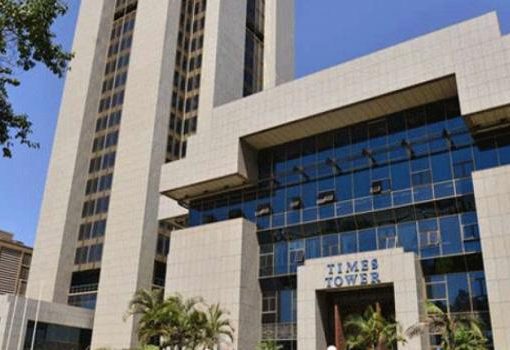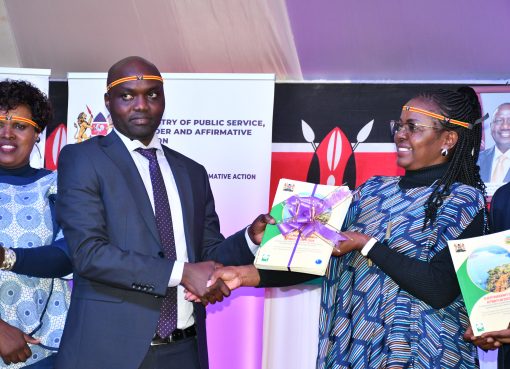
Nakuru County government has rolled out an ambitious project to reclaim its glory as a bustling manufacturing hub, lost in the past two decades following exit of industrial investors.
Governor Lee Kinyanjui affirms that with the onset of devolution, the town has gradually recovered with improved infrastructure and more private investments.
Subsequently, towards turning around its fortunes, key investments are being targeted to bolster its revenue base as the town gears for city status.
“We have incorporated public-private partnerships in setting up key projects such as the Oserian Industrial Park, Kengen Textile City Park, Lord Egerton Agri-City, and Kabarak University Smart city,” explained Kinyanjui.
The governor said the devolved unit was also keen in ensuring that the Naivasha Industrial Park creates thousands of employment opportunities as well as boosting economic development.
According to Kenya Association of Manufacturers (KAM), currently, the county has an unemployment burden of 675, 000 young people competing for limited opportunities.
With its rich agricultural highland hinterland, the region serves as a major source of raw materials for industries.
Geographically, Nakuru town is centrally located and is therefore more accessible from other corners of the country.
The governor says past and forthcoming international investment conferences hosted by the county seek to lure investors to its vibrant agricultural sector and add value to its unique products, with a view to accessing foreign markets including East African countries.
“We are also exploring direct use of steam from Africa’s largest geothermal power plants at Menengai and Olkaria for small and medium level agricultural enterprises as an initial step towards setting up of cottage industries,” he said.
The devolved unit’s industrial revival strategies come against a backdrop of Kenya Association of Manufacturers (KAM) launch of the Manufacturing Priority Agenda (MPA) 2019 under the theme, ‘Closing the manufacturing gap through the Big 4 Agenda for shared prosperity.”
The agenda outlines immediate action plans that will yield tangible results in the short term, which will see Kenya’s manufacturing sector close the current gap of 6.6 per cent by 2022, to attain the 15 per cent Gross Domestic Product target under the Big 4 Agenda.
During the launch, Principal Secretary State Department for Investment and Industry Betty Maina noted that industrialization is the driving force for any economy.
“No country has ever grown without industrialization. This is why the Government has prioritized the manufacturing sector under the Big 4 Agenda. The programme we have launched provides information on key areas the manufacturing sector would like the government to focus on, in order to drive the competitiveness of industry,” stated Maina.
Kinyanjui said improvement of road infrastructure including construction of two interchanges along the Nairobi-Nakuru-Eldoret and the proposed standard gauge railway line to Naivasha will ease transportation to and from the County, which he said was vital for industrialization.
Meanwhile, the two interchanges at Nyahururu and Njoro turnoffs are complete and are set to be launched by President Uhuru Kenyatta later this year.
“We will be pushing for productivity of the County through development of policies and enactment of laws that will make it profitable for local companies to export again, boosting their capacity to expand within the country and focusing on Small Medium Enterprise growth and productivity.
“Some of these policies must promote the competitiveness of local industry, encourage value addition and diversity of locally manufactured products,” said the governor.
For the past two years, the devolved unit has been working overdrive with private investors and seven other counties in reviving the once lucrative Pyrethrum Sub sector which once directly and indirectly supported over 3 million people.
Multi-billion Pyrethrum Processing Company of Kenya (PPCK) extraction facility is located in Nakuru.
The town is also one of the leading producers of potatoes, milk and vegetables among other crops. It also targets new investments in manufacturing and high-end residential developments.
Major industrial concerns that either collapsed or relocated from Nakuru include East Africa Industries, ABC Foods and Elliots Bakeries Limited which exited scene in 1994, Eveready Dry Cell Manufacturers which folded in 2015 following influx of cheap battery imports from China and the pre-independence Kabazi Canners that was a major livelihood for farmers and residents of Subukia and Bahati Sub Counties.
Flamingo Bottlers and Sam-Con Limited, a steel-body fabricating company that held a franchise for Isuzu trucks also moved their operations to Nairobi.
While launching KAMS Manufacturing Priority Agenda (MPA) 2019, the chairman, National Assembly Committee on Trade & Industry, Kanini Kega said, “We need to have all arms of government engaging at all times to ensure a holistic approach to addressing issues. We also encourage business to engage in the public participation processes.”
KAM Vice Chairman, Muchai Kunyiha noted that for Kenya to realize its industrialization goals, there was need for deliberate and predictable policy interventions.
“For Kenya to achieve its Big 4 Agenda and Vision 2030 goals, our approach towards the manufacturing sector has to change. It must be business unusual,” he said.
By Anne Mwale





